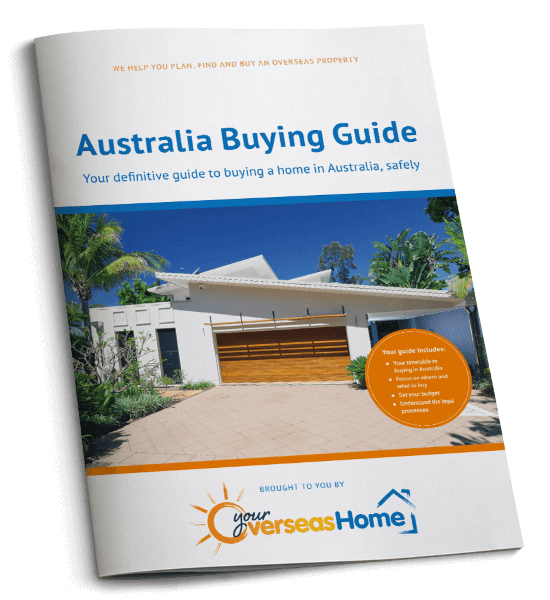We’ve all heard about funding crises, austerity and bureaucracy in British schools, with teachers leaving the profession in record numbers. So what does teaching in Australia offer? Last year Rosie Pariser swapped a primary school in England for one in Melbourne. She tells us about the process of applying and the differences between the UK and Australian teaching system.
Moving to Australia to teach can initially seem daunting and overwhelming. I found myself asking question upon question; how do I find work? How do I register to teach? How do I learn about a new, different education system?
The answers to these questions came from time spent researching before the move, and then learning on the job once I was teaching in Australian classrooms. Although it took some time to adapt to life working abroad, the whole experience has been hugely rewarding, both professionally and personally. Exposure to new teaching styles has helped develop my own practise, and life outside of work is much more balanced.

Would you be happier teaching in Australia?
Visas
Whilst living in the UK, my partner and I did a lot of research into finding work in Australia. As a qualified doctor and teacher in England, we found that we could both work in Australia without any further qualifications or tests. All we needed was a visa, so we began by looking at the ‘skilled occupation list’ on the Australia government website to see if either of us could be sponsored to work.
Many teaching jobs were on this list (e.g. special needs and secondary teacher), but primary school teaching was not. Fortunately, I was able to apply for a de-facto partner visa linked to my partner’s application. If you are unable to apply for a sponsored work visa, then one popular option is to begin by teaching on a Working Holiday visa (subclass 417), as long as you are under 30 years old. This will allow you to work within a school or agency for up to six months at a time. Depending on the school, there may be an opportunity to be sponsored. However, this depends on the school, their budget and how much they want you!
Choosing a state
The next step is looking at which state you want to live and work in, and this is well worth researching prior to your move. Unlike the UK’s nationalised education system, Australia’s education system is mainly organised state-by-state. To register as a teacher, you need to register with the specific state you have chosen. Prior to our move abroad, I registered with the Victorian Institute of Teaching (VIT) as we wanted to live in Melbourne, Victoria.
Once I had registered with VIT, I was then faced with the choice of what type of teaching I wanted to do. Do I join a school as a full time or part time teacher? Do I do supply work?
Knowing how to drive a bargain when buying could help you get more house for your dollar. Read our guide, How to Negotiate Abroad.
Decisions
Although I had previously worked as a full-time Year 3&4 class teacher for two and a half years, I began to consider moving away from this role. I realised that I wanted to give myself time to settle into life in Melbourne and find out more about teaching through supply work, where I could experience working in a variety of different schools and with a range of year group levels. Being a supply teacher (known as a casual relief teacher/CRT) is a popular job in Melbourne.
In general, competition for teaching jobs in metropolitan areas is fiercer, and so casual relief teaching is a good way to get to know the schools you like, and for them to find out if they like you. Many teachers I know found permanent roles through doing casual relief work in their school first.
I was recommended a teaching agency called anzuk so I filled out an application form, provided references and went for an interview once I had arrived. This process felt surprisingly straightforward and my consultant gave me helpful information about teaching expectations in Melbourne.

Does a sunnier and more relaxed vibe await?
A new term!
I began work at the start of the academic year in January, after the long Christmas/summer holiday. In Australia, the academic year is divided into four roughly equal terms with no half term breaks. As well as different term dates, there were plenty of other changes to grow accustomed to.
With teachers and parents casually barbecuing sausages in the ‘yard’, it was at this moment that I realised I was far away from charity cake sales in a British playground.
There were a few surprises on my first day of teaching: teachers being called by their first name, children wearing their own clothes (a no uniform policy is common in Government schools in Melbourne), and a ‘sausage sizzle sale’ at ‘recess’ with teachers and parents casually barbecuing sausages in the ‘yard’. It was at this moment when I realised I was far away from charity cake sales in a British playground, and the strict health and safety regulations of the UK.
Over the course of the academic year, I worked in more than 20 primary schools. These included Government, Special Education, and Catholic schools. One big difference to the UK was that I found so many different approaches to teaching, depending on the school you were in. Many of the Government schools felt like they had their own unique teaching ethos and individual school community. For example, a couple of schools in the ‘trendy’ Northern suburbs of Melbourne, focused on a creative curriculum where children self-initiated much of their own learning. In such schools, children would work in multi-age learning communities (large classroom spaces with children working together from Grades 1-3, or Grades 4-6) managed by three or four teachers. Other schools felt a lot closer to the UK, with one classroom, one class and one teacher.
Curriculum
The curriculum taught in Melbourne schools (known as the Victorian Curriculum F-10) is creative, varied and less prescriptive than the UK’s national curriculum. Although there is still an emphasis on Writing, Maths and Reading, there is a lot of time given to Health and Physical education, Digital Technology, and Inquiry.
For free advice about moving to Australia, simply email our specialists in the Resource Centre on [email protected] or give them a ring on +44 (0)20 7898 0549.
Inquiry projects are introduced as early as Foundation Stage (known as Grade ‘Prep’), and children are encouraged to use their own knowledge and research to deeply delve into an inquiry topic or question. As technology is a huge part of the curriculum, many schools have good access to resources such as class sets of iPads, laptops or netbooks. Many of the older year groups (Grade 4, 5 and 6) will frequently use online tools (e.g. Google Classroom or Google Docs) to access learning set by their teacher.
Specialist subjects also make up a lot of the school timetable. Each week, class teachers are required to spend time out of the classroom for their APT (allocated preparation time). Typically, a specialist teacher will take the class for one session during this time. Specialist subjects include Physical Education, Art, Gardening, Languages (Italian and Japanese are common), or Library. If you are a specialist teacher in any of these areas, then this could be a good option for finding part-time or full-time teaching in Melbourne.
As well as APT time, teachers are given more time in the school year to work outside of the classroom. In Victoria, all teachers are required to take four professional practise days (PD) per year. This in turn has a positive knock-on effect for my work as a CRT, as schools constantly need CRTs to cover PD days.
Differences
One major difference in teaching in Australia is that marking is far less laborious and time consuming than in the UK. Most schools do not have a strict marking policy and as a CRT, there is no expectation to mark work unless stated by the teacher specifically. In Melbourne, most schools place much more importance on providing verbal feedback. I worked in many schools which did ‘conferencing’ each week, a child was responsible for signing up to ‘conference’ with their teacher to discuss one piece of Maths, and one piece of Writing or Reading. As a follow up to the conference, most teachers would then write a comment about the work in a handy conference document.
Funding in Australia is a complex system, and the amount of funding given to Government, Independent and Catholic schools differs widely. Although funding in Australia is not impacted by budget cuts as severely as the UK, it is still is a divisive issue causing much upset, tension and political disputes. Whilst class sizes in primary schools tend to be smaller (an average of 22 children) than in the UK, most teachers work without a teaching assistant (Teacher Aide), unless there is a child in the class who has specific funding for one. This is a contentious issue for many teachers in Melbourne, who have spoken about their battle to get funding for children who need support from a Teacher Aide.
Teaching in Australia has given me a greater work life balance. My work load is significantly lower than when I was working in the UK, whilst still attracting a good salary
Teaching in Australia has given me a greater work life balance. As a CRT, my work load is significantly lower than when I was working in the UK, whilst still attracting a good salary (your rate of pay depends on your previous teaching experience).
The Currency Guide to Emigration is your first port of call for understanding how to send your money to Australia and control the risk of international payments.
For part-time or full-time class teachers in Australia, the daily stresses of classroom life do still exist. There are of course reports to be written, staff meetings to attend, and data to gather. However, a higher salary (ranging from $68,572 up to $112,882, again depending on years of experience and responsibilities within the school), less time spent on paperwork, and most importantly a more relaxed attitude in the school community, makes teaching in Australia a fantastic opportunity to grab hold of.
To find out more about moving to and living in Australia, don’t miss your free Buying Guide below. It’s packed with information about the process of moving, removals, purchasing a house, legalities and more.

The Australia Buying Guide takes you through each stage of the property buying process, with practical recommendations from our experts who have been through the process themselves. The guide will help you to:






